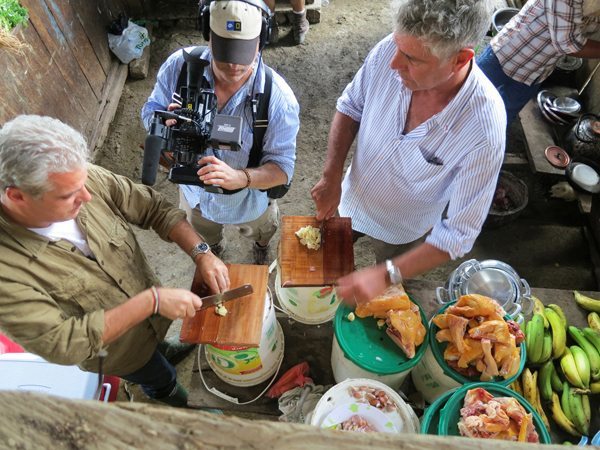
Since 2005, chef and culinary expert Anthony Bourdain has shared his extensive and exotic travels on the Travel Channel series Anthony Bourdain: No Reservations. After the conclusion of that show last year, Bourdain signed on with CNN for Parts Unknown, another series of visual essays about places, people and customs produced by Zero Point Zero Production. Parts Unknown is currently in production on its second season.
Director of photography Zach Zamboni (@zachzamboni) has been a key member of the Parts Unknown team from the beginning. From Myanmar to Colombia and even war-torn Libya, Zamboni and a tiny crew of uniquely talented videographers have traveled to novel locations and created images, with virtually no prep and no rehearsal, that not only capture the essence of these locations and the actions of the series’ kinetic host, but do so in a way that has brought the show a reputation for beautiful imagery. The premiere episode of the new series, “Myanmar,” has been nominated for the 2013 Primetime Emmy Award for Outstanding Cinematography for Nonfiction Programming. (Zamboni shares the nomination with fellow cinematographers Todd Liebler and Morgan Fallon.)
Zamboni monitors developments in the rapidly evolving world of camera and recording technology and never gets so attached to a piece of equipment that he’s unwilling to ditch it when something better comes along. He’s changed camera packages quite a few times. The workhorse camera for Parts Unknown has been Sony’s shoulder-mounted PMW-F3. It’s generally fitted with a Fujifilm 19-90mm Cabrio T2.9 (ZK4.7×19), selected for its light weight and long zoom range. The lens kit is supplemented with older, faster Zeiss Super Speed Mark II primes for light-starved situations.
“The zoom range on the Cabrio is perfect for the kind of work we do,” Zamboni notes. “We used to constantly change between wide and long zooms, and you never want to be slowed down in this line of work. This 19-90 has been revolutionary in that respect. I can live on it for most of the day.”
When Zamboni and the team pack up for their seven- to 12-day shoots, they don’t want to be limited to one camera. They also bring the smaller Sony NEX-FS700 along, almost exclusively for its ability to shoot in full 1080 resolution at speeds up to 480 fps. While the team is also starting to deploy Sony’s PMW-F5 on shoots, the F3 is still very much part of the camera package. [Keep reading…]

